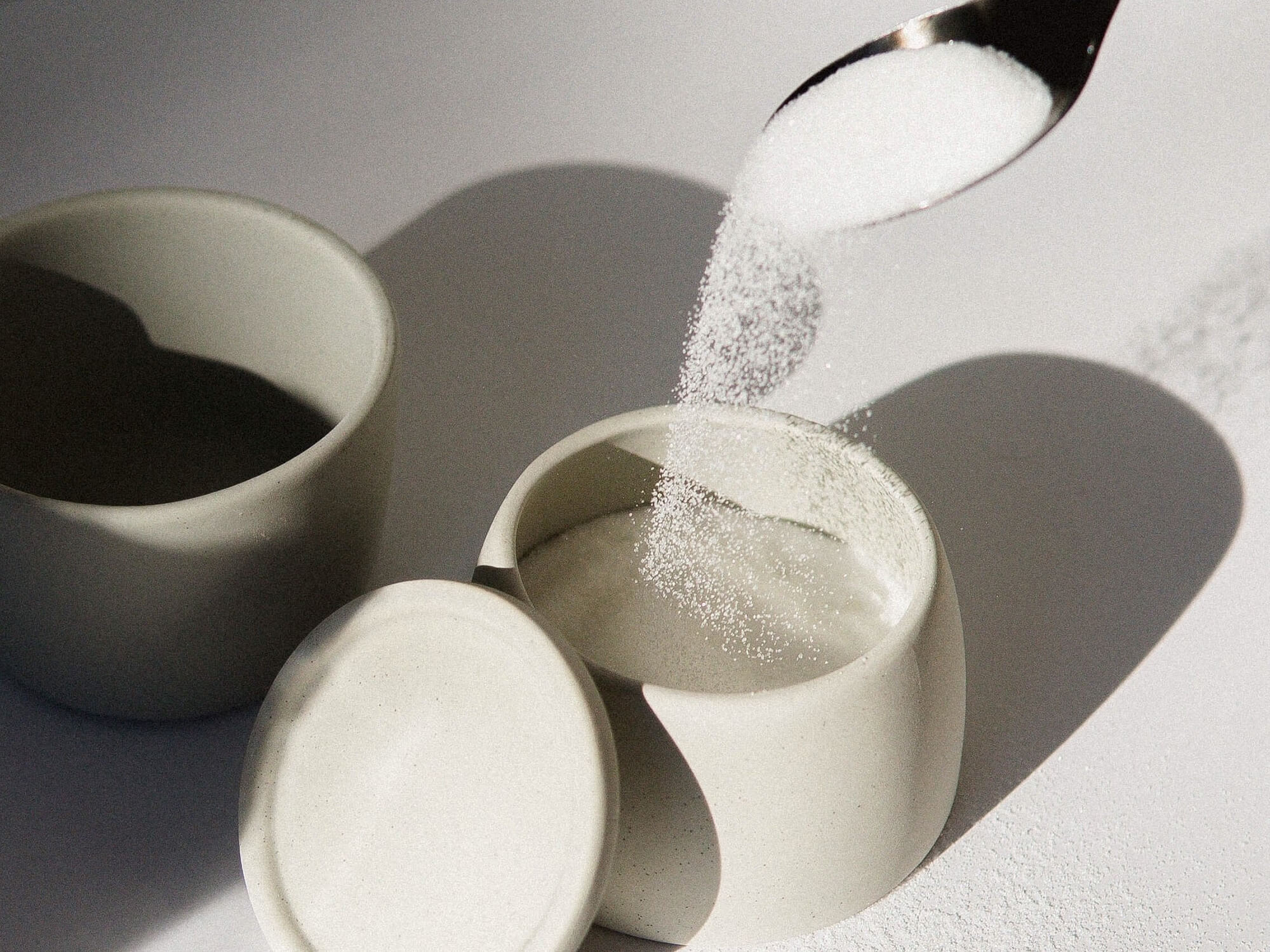Throughout India and Pakistan, there grows a relatively nondistinctive woody vine with simple oval leaves that blend in with any other green plant that it is climbing on. However, what this plant lacks in showmanship is quickly overshadowed by the fact that it has one of the most unique phytochemical actions known in the botanical world.

This herb, Gymnema sylvestre, better known as Gumar – The Destroyer of Sugar, has been of keen interest to researchers and clinicians for well over two thousand years. Starting with the Ancient Ayurvedic doctors, this herb was quickly identified to treat “honey urine” conditions. Interestingly, the Ayurvedic understanding of diabetes is of unique historical importance since they are considered the first physicians to delineate between inherited (type 1) diabetes, and later onset (type 2) diabetes.1
Meanwhile, as early as the 1800’s CE, colonizing Europeans also took notice of this herb in particular, and they began importing it for research purposes with Dr. Hooper characterizing the now famous gymnemic acids in 1889.2 Since then, the herb has only increased in popularity both as a supplement for blood sugar support and as a subject of clinical trials.
But is there more to Gymnema than its impressive effects on blood sugar? To answer that, one must first look at how it was used, and the context in which it was understood to work, using the experience of doctors many millennia ago.
Ayurvedic doctors described Gymnema as an herb that is considered “light” and “bitter” when digested. In the Ayurvedic tradition, lightness was discussed very similarly to how we might think of it today: easy to digest, unlikely to cause bloating, and a good antidote if someone’s had too much heavy food. The concept of “bitter” however, is much more nuanced than a simple flavor. The different flavors were considered unique stimuli to the body that would cause the energy and resources of the body to act in a specific way. For instance, bitter foods were considered “downbearing” and caused the body to prioritize downward movements internally. For example, the bitter flavor was used to treat common complaints like acid reflux and constipation. We now understand that the bitter flavor does activate a neurological reflex to stimulate digestion: increasing acid production and promoting peristalsis leading to bowel evacuation. It would be an effective treatment then, for acid reflux that is secondary to low stomach acid, which is required to close the lower esophageal sphincter. In Ayurveda, bitter was also considered a “colder” type of taste, meaning it would balance overly hot foods or be useful in hot climates. This dovetails nicely with the concept of eating light, bitter salads on hot summer days in many cultures across the world. Interestingly however, Gymenma was classified as a “hot herb” that is bitter. In the classical literature, this would suggest the herb is balanced, and unlikely to cause too much heat, or too much cold in the body. Balanced herbs were more broadly used and were treasured for their medicinal nature, and Gymnema was no exception.
The second classification of herbs applied by Ayurvedic doctors was its effects on the Dosha. The Dosha is the context by which Ayurveda makes medical recommendations. It divides all aspects of physiology and psychology into three main subtypes, called Vata, Pitta, and Kapha respectively. Each of the three balance and rely on the other two. They work in a complex interconnected system where a disharmony in one, if left unbalanced, is likely to generate disease. Gymnema was classified as normalizing Vata and Kapha. Vata is associated with movement and catabolism, and Kapha is associated with our flesh and body fluids. Ayurvedic doctors classified 20 different types of doshic imbalances that would cause diabetes and within that, two types stand out: Vata type which causes the person to waste, become very thin, and affects children, similar to type 1 diabetes, and Kapha type which involves obesity, inability or no desire to exercise, and a desire for sweet things. Based on this knowledge, Ayurvedic doctors would be able to help a large subset of cases of Prameha, or ‘diseases with urinary complications’ and Madhumeha which literally translates to “honey urine”, two words that both are correlated as diagnoses of diabetes today, with Madhumeha being the more specific term and Prameha representing a host of different conditions, that can ultimately lead to the generation of Madhumeha, or diabetes. Essentially, Madhumeha can be considered an advanced condition or stage of Prameha. This highlights Ayurveda’s tendency towards early detection and prevention of disease and its attempts to restore balance before severe disease appears.3
Using these categories: temperature and flavor along with the doshic influence Gymnema has on people, we can begin to understand how this herb was used more widely than just those with diabetes. Gymenma was also a remedy for fever and cough: this makes sense due to its ability to harmonize Vata, which controls the breath in Ayurveda. Additionally, its bitter flavour was associated with the “downward action of the lung,” meaning it was useful in supporting the ability to breathe deeply, something often compromised during acute respiratory infections. Interestingly today, research has noted that Gymnema extract interferes with the reproductive ability of Respiratory Syncytial Virus, a common seasonal virus that assuredly would have caused coughs and fevers.4 Another use for Gymnema was to promote female reproductive health and decrease uterine pain. It was thought that those with Kapha imbalances and a tendency towards sweet foods would have worse uterine pain and Gymnema would antidote that. Some research does support this, a trial of 56 participants saw a decrease in the desire to eat sweet foods when supplementing with Gymnema. It is interesting since this behavioural change is usually not as well studied as the plethora of articles looking at blood sugar as a primary biomarker of efficacy.5
Lastly, it was used as an herb that treats the heart, an organ that relies on all 3 doshas to be balanced. While treating diabetes and obesity will obviously impact cardiac outcomes and could easily explain its role in cardio-protection, new research is uncovering antioxidant and direct cardiac activity of gymnema including lowering blood pressure and heart rate in a murine model.6
The research and refinement of using Gymnema span thousands of years, with our modern clinical research continuing to elucidate the effectiveness of this plant. That said, it raises curiosity over what modern research might uncover when reviewing some of the other applications of Gymnema by the Ayurvedic physicians of antiquity. By utilizing the way Gymnema was understood and employed by Ayurvedic physicians, we can continue to explore and critically evaluate the many therapeutic benefits of this herb.
- Khan, F., Sarker, M., Ming, L. C., Mohamed, I. N., Zhao, C., Sheikh, B. Y., Tsong, H. F., & Rashid, M. A. (2019). Comprehensive Review on Phytochemicals, Pharmacological and Clinical Potentials of Gymnema sylvestre. Frontiers in pharmacology, 10, 1223.
- Udani, Jay and Hardy, Mary. Gymnema sylvestre for the Treatment of Diabetes — How Sweet It Isn’t. Relias Media. March 1, 2005
- Garg, Dr.Gunjan & Mangal, Dr.Gopesh & Chundavat, Prof. (2010). Comparison of Madhumeha With Diabetes Mellitus.
- Vimalanathan, S. , Ignacimuthu, S. , & Hudson, J. B. (2009). Medicinal plants of Tamil Nadu (Southern India) are a rich source of antiviral activities. Pharmaceutical Biology, 47(5), 422–429.
- Turner, S., Diako, C., Kruger, R., Wong, M., Wood, W., Rutherfurd-Markwick, K., & Ali, A. (2020). Consuming Gymnema sylvestre Reduces the Desire for High-Sugar Sweet Foods. Nutrients, 12(4), 1046.
- Kumar, V., Bhandari, U., Tripathi, C. D., & Khanna, G. (2012). Evaluation of antiobesity and cardioprotective effect of Gymnema sylvestre extract in murine model. Indian journal of pharmacology, 44(5), 607–613.
Share:
Related Posts

Goodbye Pie Chart, Hello Phase 1 Sliders
Written by Allison Smith, ND | 2025 As we usher in a new era of DUTCH testing which leaves behind the concept of the three-way

Introducing the DUTCH Dozen
Written by Kelly Ruef, ND | 2025 Hormone testing can be complex, which is why Precision Analytical developed the DUTCH Dozen, an interpretive framework that

DUTCH Report Enhancements
Written by Hilary Miller, ND | 2025 Precision Analytical have released the newest version of the DUTCH Test. This is the report’s most significant update

Gallbladder Health 101: What It Does and How to Keep It Working Well
Written by Ashley Palmer & Pooja Mahtani | 2025 The gallbladder may not get much attention compared to the gut, but it plays a central

Can You Bring Vitamins on a Plane? How To Travel with Supplements
Written by Austin Ruff | 2024 Are you traveling for a work conference, an athletic competition, or a weekend getaway? Just because you’re leaving home

